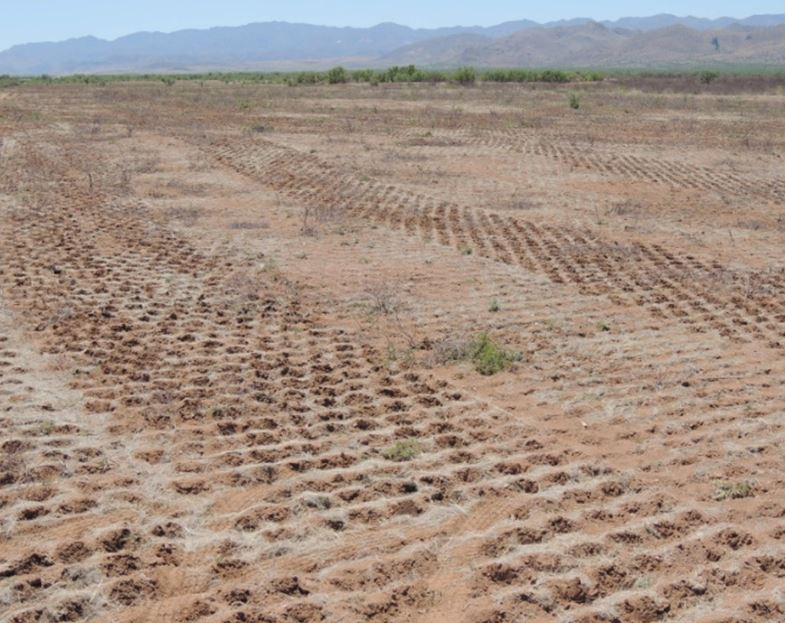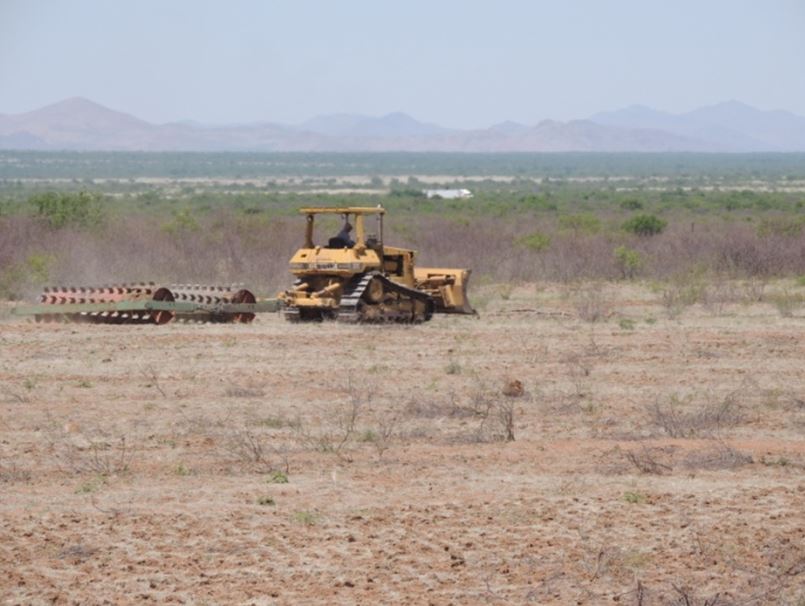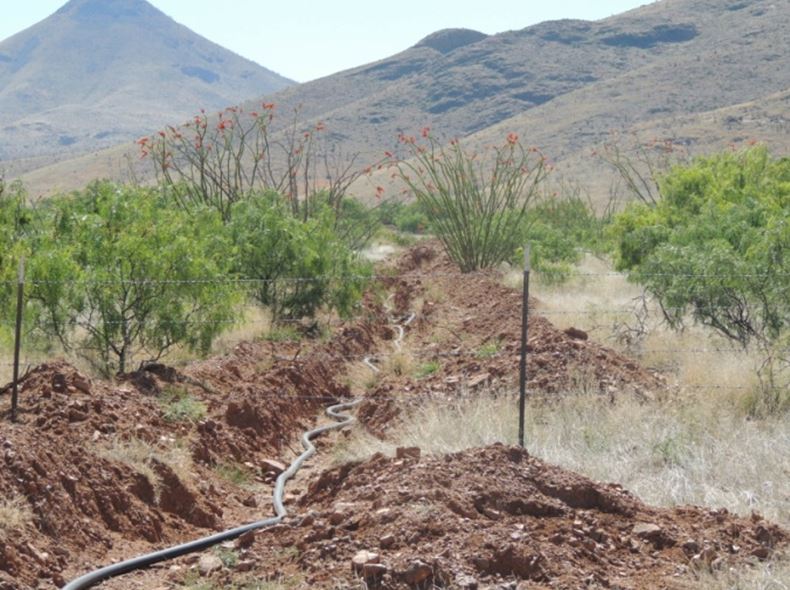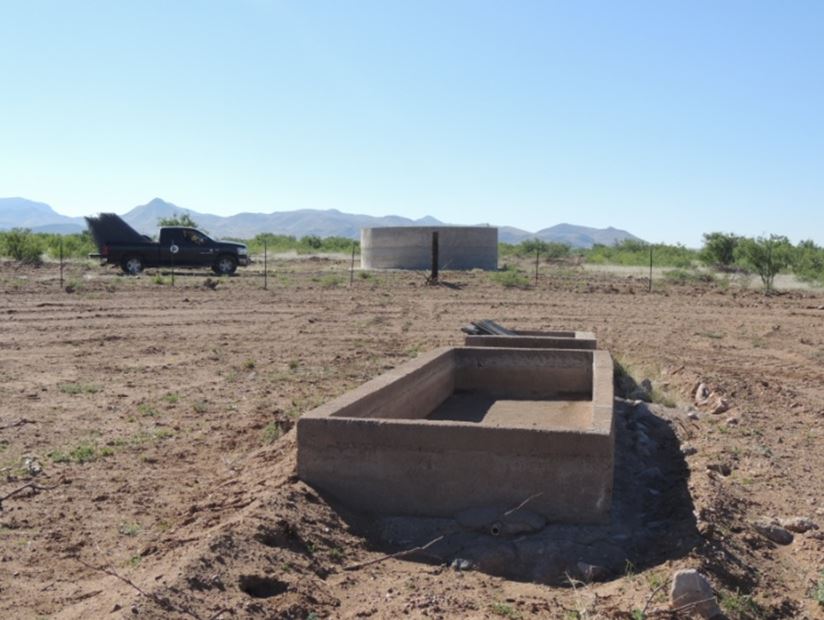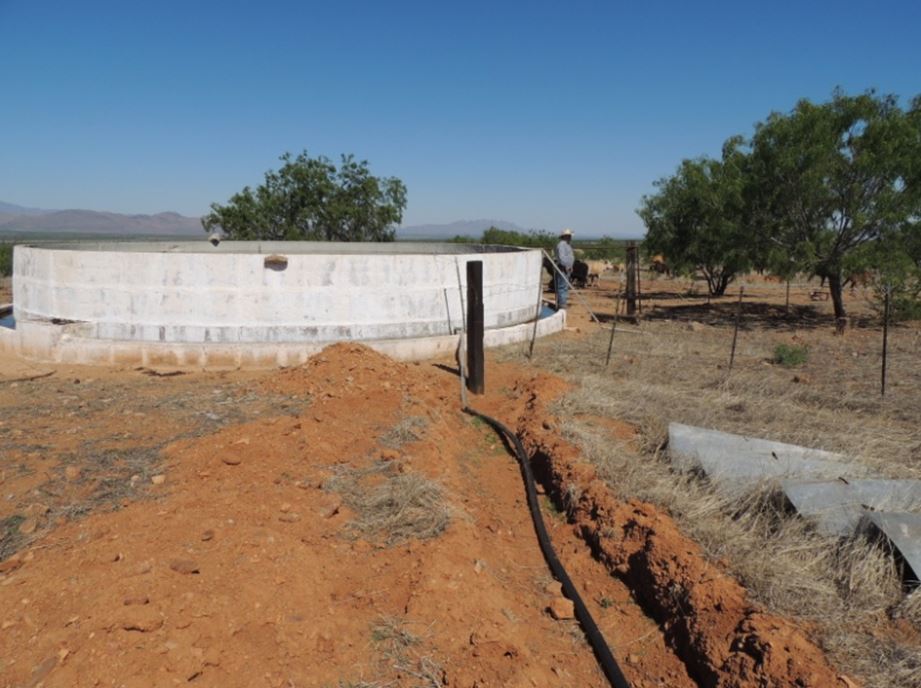| Type | CEC-support Ranch Pilot |
| Organization | Rancho Plan de Álamos |
| Country | Mexico |
| Region | Municipalities of Villa Ahumada and Chihuahua, Chihuahua |
| Grass Type | Tussock grassland and halophyte grassland |
| # of head of cattle | 800 |
| Hectares | 12,000 |
| Language | Spanish |
| Date modified | August 2015 |
Rancho Plan de Álamos is located in the priority land region known as the Flores Magón and Sierra del Nido Grasslands in the central valley region of Chihuahua, where the state’s last uncultivated valleys are located. As part of the grassland conservation collaboration initiative launched by the Rocky Mountain Bird Observatory and IMC Vida Silvestre, the ranch receives support from the Commission for Environmental Cooperation (CEC) and the US National Fish and Wildlife Foundation.
The ranch’s main activity is cattle raising: 800 head of cattle are raised, 120 of which are Hereford and the rest are commercial cattle. In addition to stockbreeding, a 30-hectare field of pecan trees is grown at Plan de Álamos, along with a small vineyard, and a 100-hectare alfalfa prairie for fattening.
The owner of Plan de Álamos, Alberto Terrazas, belongs to a family with more than 100 years of stockbreeding experience. Enthusiastic and very active, at his ranch Terrazas is constantly implementing grassland management and water and soil conservation projects. His priority is grassland conservation, especially of the native scrub species, but he has also conducted several of his own experiments on shrub control and replanting and bunchgrass seed banks, such as blue grama (Bouteloua gracilis).
A semi-permanent creek runs through the ranch, which has diverse topography and is located in a region of great importance for grassland biodiversity. There are six different habitat types: swampland, riverland, halophyte grassland, bunchgrass with mesquite and acacia, desert scrub and bunchgrass with live oak. Besides providing a habitat for a diversity of bird species, the ranch is an ecological corridor for other species of interest in the region, such as the jaguarundi and black bear.
There are three main threats to the ecology of the grasslands at Rancho Plan de Álamos: 1) the invasion of mesquite and other shrubs, such as the whitethorn acacia (Acacia constricta); the invasion of Lehmann lovegrass; and 3) the lack of true native perennial bunchgrasses. These three conditions affect cattle production, as they lead to poor-quality forage and fragment the habitat of native fauna species.
Three groups of cattle are subject to management on 40 paddocks at the ranch, whose activities are currently changing to rotational grazing. With a moderate load of 14 hectares per animal unit (ha/AU), the objective is to institute rotational grazing on 61 paddocks, managing a single herd.
As part of the comprehensive grassland management plan agreed upon with the ranch, 13 escape ramps have been placed in water basins to prevent birds from drowning; three artificial nests were installed for the aplomado falcon; and six kilometers of fencing were installed (respecting wildlife) to divide paddocks. Dams are also being excluded, and two font troughs have already been built, each with a capacity of 20,000 liters. In addition, three kilometers of tubing have been installed (1.5 km of 2” and the rest 1”). To control invasive vegetation, 180 hectares of mesquite and 70 hectares of whitethorn acacia have been managed via mechanical means, reducing the invasive shrub cover by 80 percent.
The mesquite and other invasive brush management strategy involves expanding open grassland areas to create a connection between the open areas in order to expand the grassland bird habitat for such species as the golden eagle, the aplomado falcon and the Swainson’s hawk. Clearing mesquite will also help to retain rainwater and aid the spread of beneficial grass and scrub.
